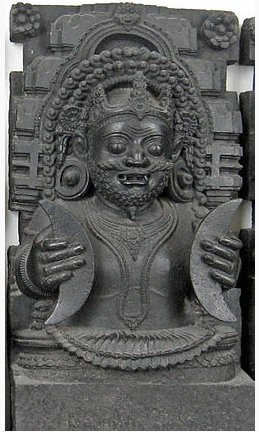3. Allen points out a possible answer to why Heka was important: "But they [the framers of the system of lunar stations] were possibly influenced by the recollection of the fact that the vernal equinox lay here about 4500 B.C." But I think today's right ascension value 05h 32m = 332m implies Heka was at spring equinox ca 332 / (24 * 60) * 26000 = 5994 years ago, i.e. around 4000 B.C. Maybe Allen counted 26000 / 4 = 6500 and then assumed there was a cardinal point in the system around 2000 A.D. Anyhow, all constellations must have been at vernal equinox at some point so I fail to see the value of the argument - unless there was something special about 4500 B.C. Instead, I find a significant idea in another phenomenon: "λ and the two stars phi furnish an easy refutation of the popular error as to the apparent magnitude of the moon's disc, Colas writing of this in the Celestial Handbook of 1892: In looking at this triangle nobody would think that the moon could be inserted in it; but as the distance from λ to φ¹ is 27', and the distance from φ¹ to φ² is 33', it is a positive fact; the moon's mean apparent diameter being 31' 7''. This illusion, prevalent in all ages, has attracted the attention of many great men; Ptolemy, Roger Bacon, Kepler, and others having treated of it. The lunar disc, seen by the naked eye of an uninstructed observer, appears, as it is frequently expressed 'about the size of a dinner-plate', but should be seen as only equal to a peppercorn ..." (Allen) Thus the Heka 'tripod' is in thought connected to what happens at a total eclipse of the moon (a phenomenon much more frequent than a total eclipse of the sun) - it illustrates the size necessary for the 'body' of Rahu. Although his measure could have been regarded as greater, we can see in the picture where he is depicted holding also a substantial part of the black (sooty) cresents of waning and waxing moon:
To conclude my argument I wish to refer to the form of the letter lambda and that of a similar letter in the Persian alphabet: "Ulug Beg, as well as Nasr al Dīn, likened the group to the letter of the Persian alphabet that was similar in form to the Greek Λ." (Allen) I cannot find this Persian letter, but instead I can illustrate my argument with an even more compelling letter, viz. the Malayam letter (pronounced 'ra' or 'ta') used for Rahu: റ Earlier I have pointed out (cfr at Kuukuu) how the Egyptian 'cloth' sign is like the inversed 'sky pillar' sign:   |
